The SCUG group organizes an event in Brussels that I will attend 🙂 It’s free but you need to register!
The System Center User Group Belgium invites you to their next free event, where they’ll show you how we can use Opalis and the System Center suite together to make your life easier! With real life examples, like maintenance mode due to server patching, using System Center Operations Manager (SCOM) as the manager of managers, automating VM creation, Alert enrichment, etc they will demonstrate how to use the full strength of Opalis as an orchestration tool together with Operations Manager, Data Protection Manager (SCDPM), Virtual Machine Manager (SCVMM), Service Manager (SCSM) and Configuration Manager (SCCM). If you want to be much more efficient in your day to day work, you will not want to miss this session!
Practical info
- Date: 9 September 2010
- Location: Microsoft Belgium, Da Vincilaan 3, 1935 Zaventem
- Speaker: Alexandre Verkinderen
- Registration is free but required
Read more at SCUG
WMI was in the past commonly used for scripting tasks and sometimes it handy to know which classes are installed on a server/workstation. Today I found a WMI GUI that was written in Powershell by Marc van Orsouw. He has a blog called The PowerShell Guy and you can download it from here!
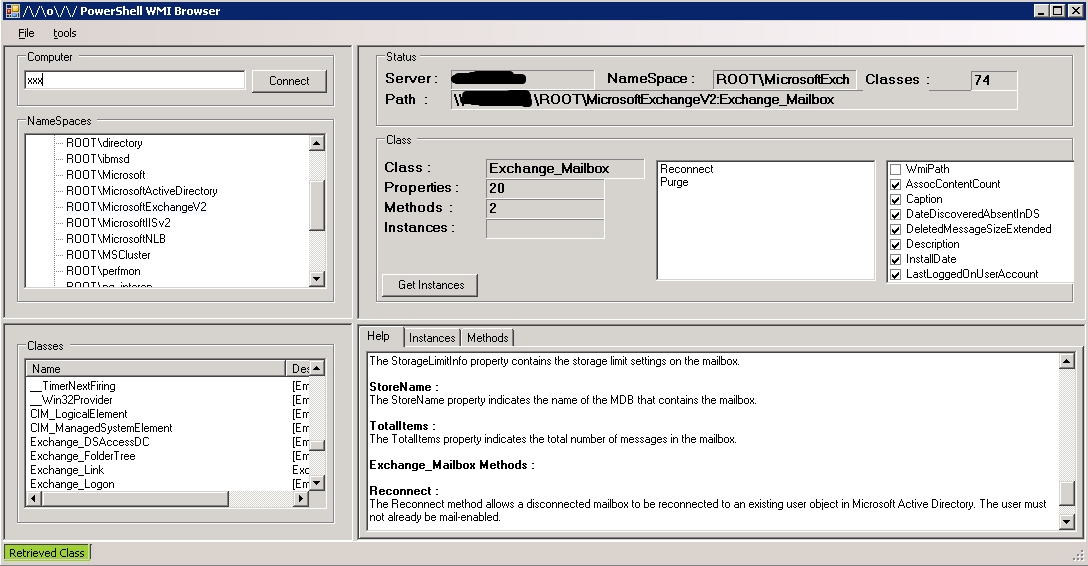
There has been quite a bit of discussion in various places around manipulating data that is captured and processed through Opalis Integration Server. While Opalis Integration Server comes with many objects out of the box that make data management a breeze, there are opportunities for better data manipulation capabilities for the information on the data bus.
This is where the Integration Pack for Data Manipulation comes in. A series of objects that can be added into your Opalis Integration Server environment to provide extended data management capabilities. Read further at Source…
Integration Pack for Data Manipulation
http://opalis.codeplex.com/releases/view/46827
I have installed the IP and these are the objects that are added

Source: Technet
When you create a new Assembly that needs a dependency file to run you will need to add this file to the Integration Pack when building. In my case I wanted to execute some PowerShell commands from a file.
I installed PowerShell v2.0 so your command would be
powershell -file .<myscript.ps1> <func1> <arg0>
but this doesn’t work from an Integration Pack since it will look for the file in C:WindowsSystem32
The Integration Pack copies dependency files to
C:Program FilesCommon FilesOpalis SoftwareOpalis Integration ServerExtensionsSupportbin
and this folder is part of the Environment Variable PATH
So changing your command to this solves that problem and the Integration Pack executes the commands from the PowerShell file
powershell.exe <myscript.ps1> <func1> <arg0>
It’s off course better to use a custom dll-file but I don’t have any experience with C# so that’s for later.
I’ll post my own custom Integration Pack later this week!
I personally don’t like to store hard coded values in any of my scripts. They limit your abilities for future use. it’s the same with Opalis so I decided to store my configuration in an XML-file.
1) create a new .xml-file and create a new tree
<?xml version="1.0" encoding="ISO-8859-1"?>
<config>
<domain>
<FQDN>mydomain.local</FQDN>
</domain>
<USER>
<DEFAULTPASS>PKeTR3ss1w2xS</DEFAULTPASS>
</USER>
</config>
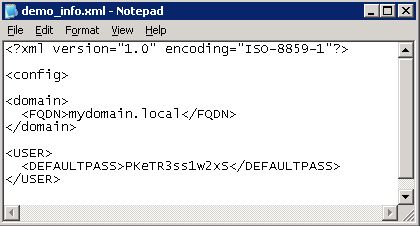
Read more…
Charles Joy has uploaded about 15 videos (YouTube) that describe how-to use the QIK tool to create your own Integration Pack. You can download the zip-file with the C# source-files on Technet Blog
Click here to see the videos
Windows Management Framework, which includes Windows PowerShell 2.0, WinRM 2.0, and BITS 4.0, was officially released to the world this morning. By providing a consistent management interface across the various flavors of Windows, we are making our platform that much more attractive to deploy. IT Professionals can now easily manage their Windows XP, Windows Server 2003, Windows Vista, Windows Server 2008, Windows 7, and Windows Server 2008 R2 machines through PowerShell remoting – that’s a huge win!
You can download the packages here: http://go.microsoft.com/fwlink/?LinkID=151321
It might be usefull to know which version of Powershell is installed on your server / desktop.
Open a dos-prompt and then open a PowerShell session. There are 3 ways to check the installed version
Method 1
$Host.Version
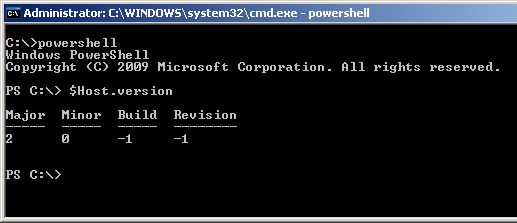
Method 2
get-host
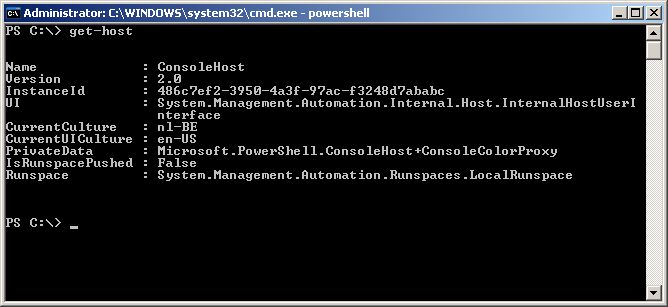
Method 3 (works only with v2)
$PSVersionTable
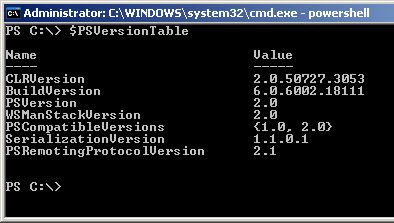
Adjust the array with your dns suffixes and save as a .VBS file
DNSSuffixSearchOrder = Array(“MYDNS1.COM”, “MYDNS2.COM”)
Set WMI = GetObject(“WinMgmts://”)
Set adapter = GetObject(“winmgmts:Win32_NetworkAdapterConfiguration”)
adapter.SetDNSSuffixSearchOrder (DNSSuffixSearchOrder)
Archive post Jan 7th, 2007
This command will reload the default security settings for a Windows 2003 server. Can be usefull if someone else messed around or a wrong GPO was applied.
secedit /configure /cfg %windir%repairsecsetup.inf /db secsetup.sdb /verbose
Archive post: Dec 22th, 2006






Recent Comments